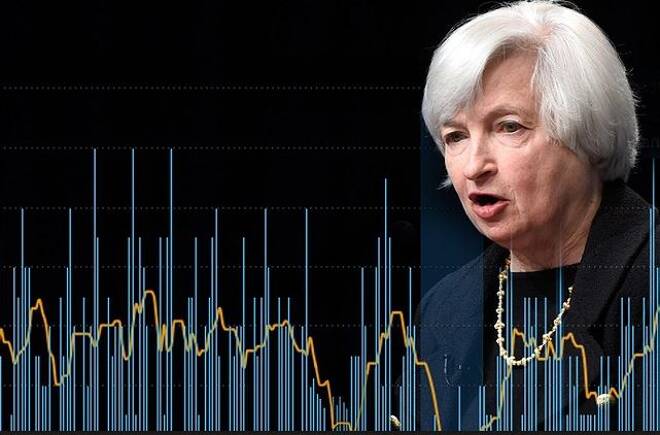Advertisement
Advertisement
Questioning the Fed’s Political Independence
By:
The U.S. Federal Reserve can really be annoying at times. Earlier in the year it expressed caution about raising interest rates because of low inflation.
The U.S. Federal Reserve can really be annoying at times. Earlier in the year it expressed caution about raising interest rates because of low inflation. Then it was worried about raising rates because of the labor market. At mid-year, it was worried about raising due to the uncertainty over Brexit. However, recently I’ve come to the conclusion that it really doesn’t know how to raise interest rates without driving the stock market lower.
And as everyone knows it probably wouldn’t be prudent to drive stocks lower this close to a Presidential election.
WHEN IS A MANDATE NOT A MANDATE?
Some of its reasons for not raising rates are confusing to the markets. For example, the Fed’s mandate is a 5 percent unemployment rate and a 2 percent inflation rate. The labor market hit the 5 percent target in November 2015 and it has not gone above that rate since. In July, it dipped as low as 4.7%. Since then it has come in at 4.9% for three consecutive months.
Additionally, the current pace of employment gains at 180,000 per month remains well above the long-term rate needed to keep unemployment stable and provide jobs for new entrants.
The Fed raised rates in December 2015, just one month after the unemployment rate hit 5.0% and it actually went lower from there. Based on this assessment, I can’t see what the Fed is worried about.
However, Fed Chair Janet Yellen said at her press conference on September 21, shortly after the release of the Fed’s latest interest rate decision, that the decision not to raise rates reflected the evidence that labor-market slack continued. So apparently, it’s not the actual unemployment rate we should be watching by the labor-market slack.
UNEMPLOYMENT RATE OVER TARGET, INFLATION UNDER TARGET
Yellen is also on record as saying the decision not to raise rates reflected the evidence that labor-market slack continued and that inflation was still below target. She further commented that there was scope to let the economy run a little longer than expected given these two factors.
Headline inflation is still short or the 2% target while the core rate has held around 1.5%. Yellen recently said there were risks in waiting too long, especially if inflation expectations rise. Given recent strong performances in crude oil, natural gas, coffee, sugar and cocoa, I think we are getting ready to see a rapid change in inflation.
Inflation can jump fast too. Just the other day, Eurostat, the European Union’s statistic agency, said that the annual rate of inflation rose 0.4 percent in September. This number means that the inflation rate doubled in September likely because the impact of lower oil prices started to fade.
With the new OPEC agreement to curb production reached last week, the waning impact from lower energy prices is likely to continue over coming months given the recent rise in oil prices that finished the week knocking on the door or $50.00 per barrel.
The U.S. inflation rate was lower in December 2015 when the Fed hiked rates and has been slowly trending higher in 2016 and now appears to be ready to surge. But the Fed said no to a rate hike in September.
So the way I understand it, the unemployment rate has exceeded the target, but that’s not good enough to raise rates. Inflation is slowly rising and can make a big jump in just one month, but it is still below the target. Still not a good enough to reason to raise rates a second time in a year.
This takes me back to the original Fed mandate which has to be altered a bit. I think it should read the unemployment rate has to be a 5% or lower with no labor-market slack and the inflation rate has to be at 2.0% or higher. If that was the mandate then I would understand its reasoning for not raising rates a little better.
CONSPIRACY THEORY
Instead I am forced to join the growing number of conspiracists who believe the Fed’s decision to hold rates is politically motivated. This movement has grown large enough to warrant a response from Yellen in September. She insisted in her news conference that the Fed is independent from politics and that there is a live meeting in November.
I think recent price action in early September supports my belief. If you remember, several Fed officials made hawkish comments and the Dow dropped 400 points in a day. This was the test designed to see how the stock market would react to a September rate hike.
The same day the Dow was breaking, the Fed made a change in its speaker schedule. Everyone thought at that time its speaker would further pave the way for a rate hike. Instead she came out dovish and the Dow took back most of its previous losses.
In my opinion, the Fed lined up its speakers in this order to test the waters and it didn’t like what it saw. It concluded that a rate hike in September would’ve driven the stock market sharply lower. And rather than risk a weaker stock market or perhaps the memory of a major sell-off going into the election, it decided to pull the plug on a rate hike in September.
I guess we won’t know if this premise is valid until December. If the Fed raises rates at that time and there is still labor-market slack then all I’ll be able to do is smile while scratching my head.
About the Author
James Hyerczykauthor
James is a Florida-based technical analyst, market researcher, educator and trader with 35+ years of experience. He is an expert in the area of patterns, price and time analysis as it applies to futures, Forex, and stocks.
Latest news and analysis
Advertisement
